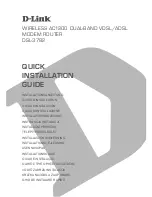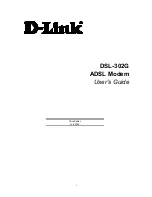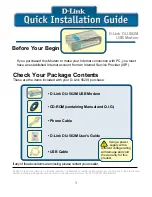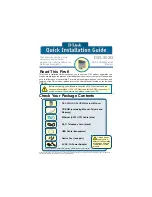
XH1172 – DSE USB ADSL Modem – Installation Guide
4
2 Features & Specifications
Protocol and Device Driver Selection
This USB ADSL Modem takes advantage of the processing power available with today’s
computers by eliminating the need for a separate micro controller supporting the ATM
Segmentation and Reassembly (SAR) function, resulting in a cost-effective ADSL solution
suitable for both full-rate and G.lite applications. Additionally, the host-based software
supports industry standard functions such as PPP over ATM (PPPoA) per RFC 2364, PPP
over Ethernet (PPPoE) per RFC 2516, Bridged/Routed Ethernet per RFC 2684/1483, and
Classical IP over ATM per RFC 2225/1577.
Supported operating systems are Windows 98SE, Windows 2000, Windows ME, Windows
XP and MacOS X. The USB version 1.1 specification is supported and is the preferred
standard method to connect peripherals to modern-day PCs.
During periods of no data transmission, this USB ADSL Modem performs idle cell insertion
and deletion thus unloading this task from the host PC. ADSL is a transmission technology
used to carry user data over a single twisted pair line between the Central Office and the
Customer Premises. The downstream (Central Office to Customer Premises) direction
typically supports a much higher data rate than the upstream or return (Customer Premises
to Central Office) channel. This asymmetric nature lends itself to applications like remote
LAN access, Internet access, and video delivery.
Data rates up to 8 Mbps downstream and up to 1 Mbps upstream are supported for Full Rate
ADSL. Data rates up to 1 Mbps downstream and up to 512 Kbps upstream are also
supported for G.lite. Actual data rates depend on the transceiver implementation, loop
length, impairments, and transmitted power.
The USB ADSL Modem Device is based upon a scalable architecture. This architecture
enables the device to support splitter-less G.lite as well as splittered and splitter-less full-rate
ADSL. G.lite enables telephone companies to deploy consumer oriented, “Always on” 1.5
Mbps Internet access services without the need for splitter equipment, micro-filters, or wiring
changes at the customer premises.
Host Software
The host software NDIS miniport driver provided implements the ATM Adaptation Layer 5
(AAL5), which is composed of two sub layers:
1. The Segmentation and Reassembly (SAR) layer
2. The Convergence Sub layer (CS)
The AAL5 protocol provides virtual connections, which offer error detection, but not error
correction, between end stations attached to the same network. The SAR sub layer
transmitter segments the higher layer information into a size suitable for the payload of the
ATM cells of a virtual connection. The receiver reassembles the contents of the cells of a
virtual connection into data units to be delivered to higher layers.






































